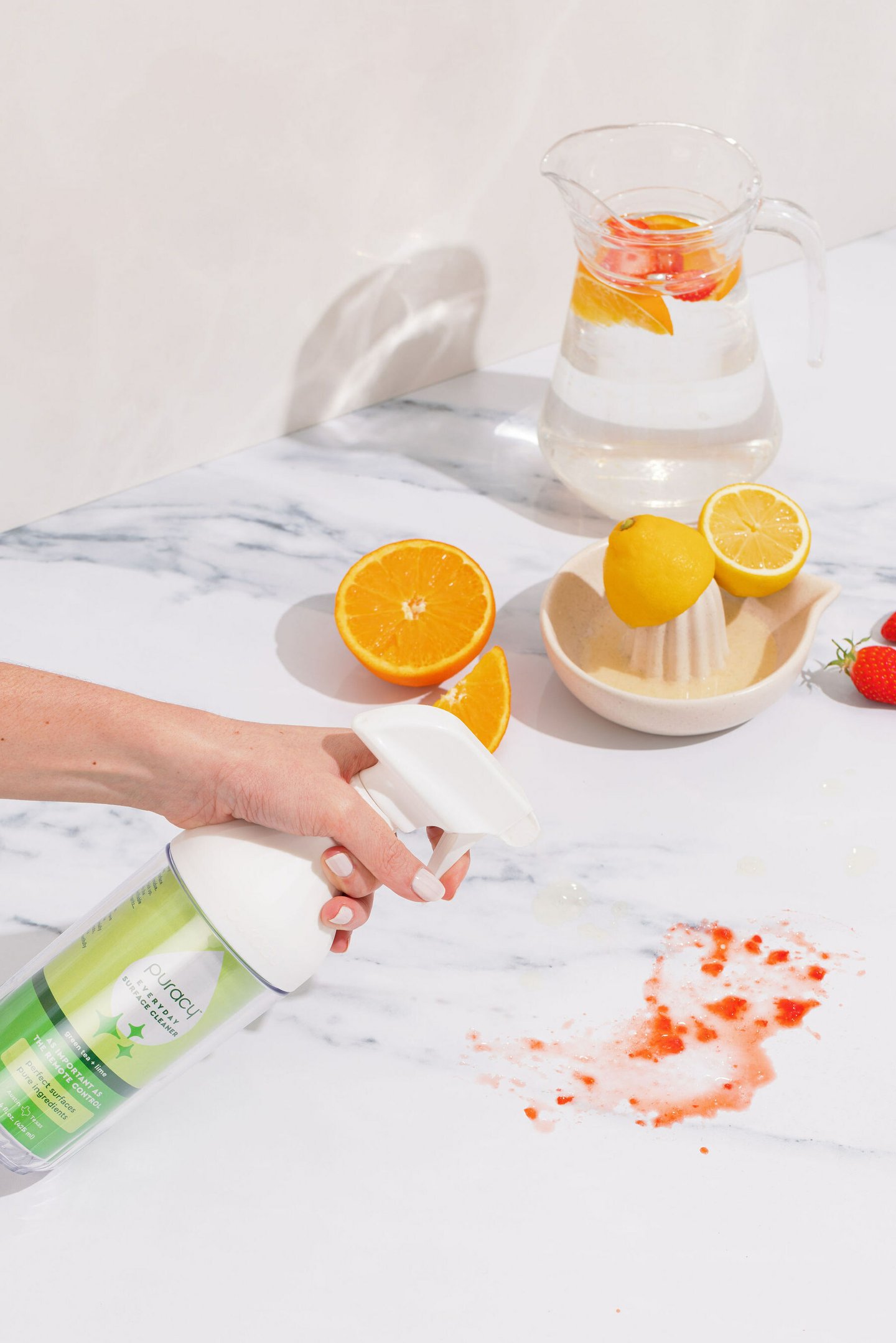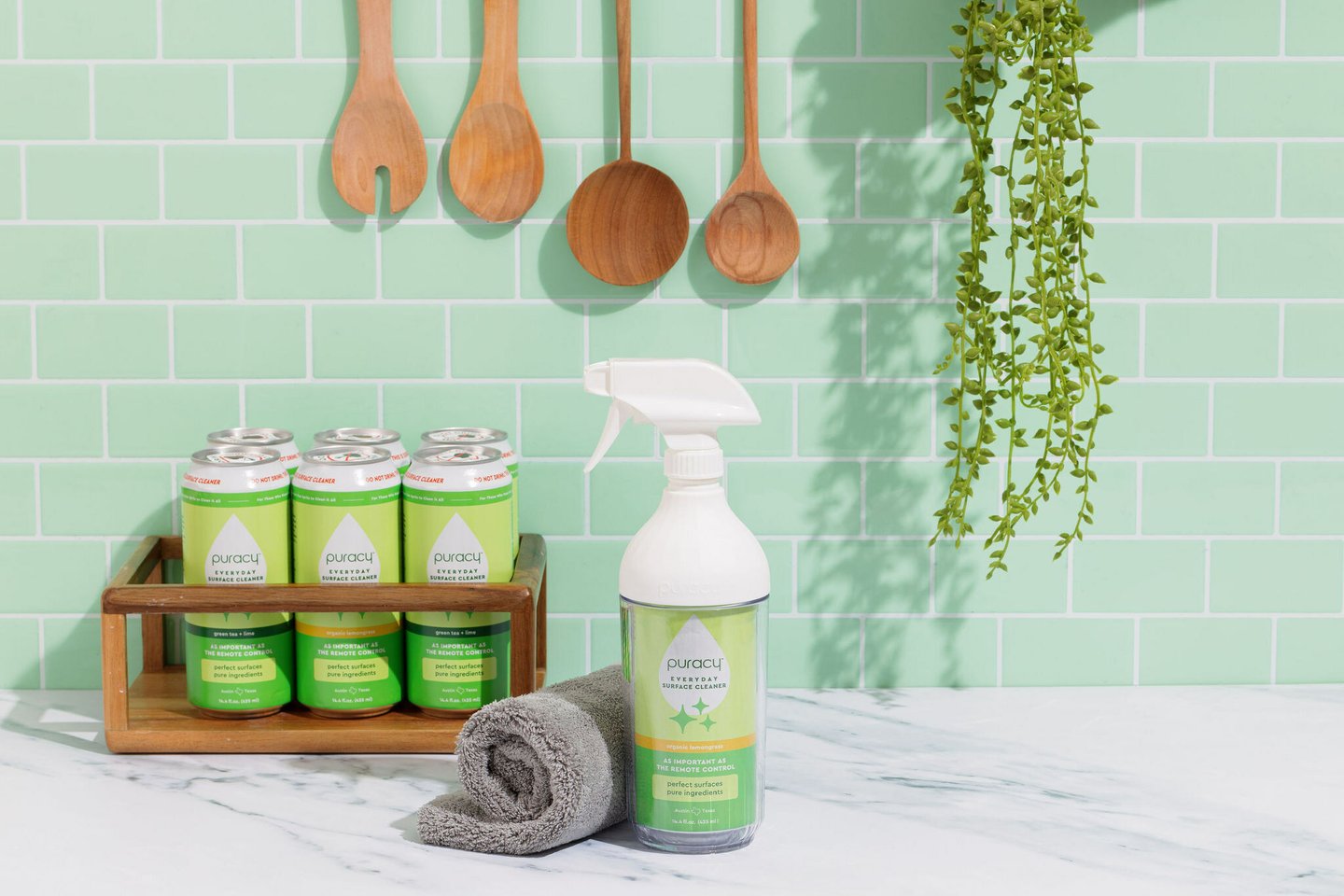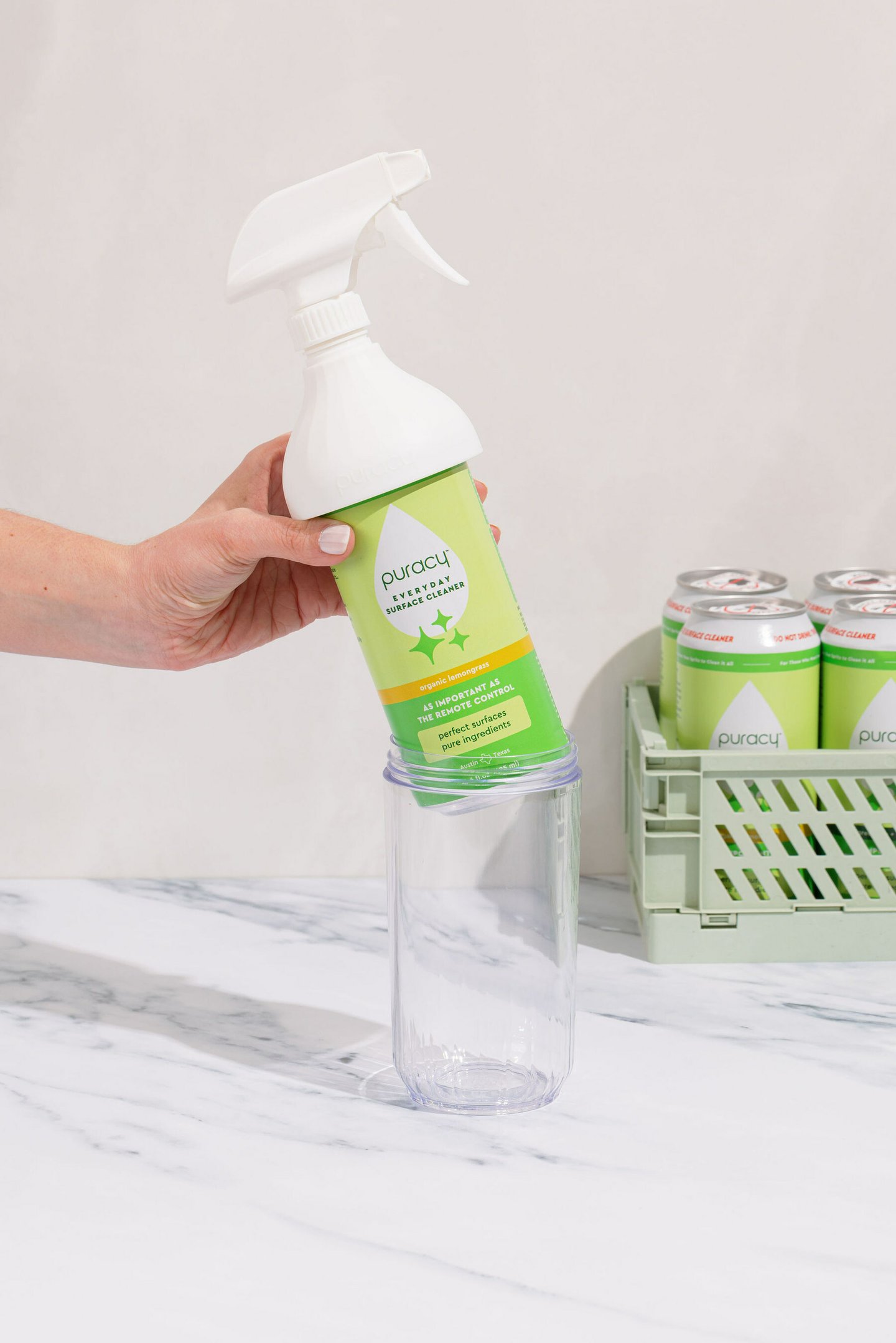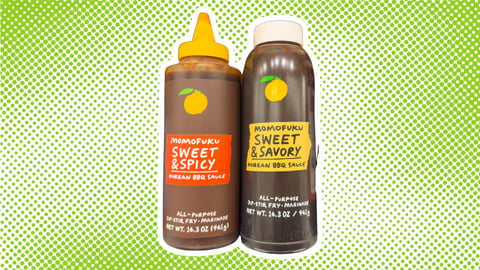Q&A: How Puracy Wants to Kill Off Single-Use Packaging
Plant-based household cleaning and personal care brand Puracy is making strides in the area of packaging sustainability, recently bringing to market a product that eliminates single-use plastics in the cleaning category.
The Clean Can System is a recyclable aluminum beverage can that retailers can sell in plastic-free, ready-to-use packaging, and the system can be refilled/recharged in under 10 seconds, according to the company. As part of the convenience aspect, Puracy wanted to steer clear from other refillables on the market that require extra steps or produce more mess, touting the design as a “frictionless solution” that simply requires consumers to crack open the can and snap it into the system.
Puracy first launched the new product on its website and is set for a nationwide rollout at select Target locations. Below, Puracy’s co-founder, Sean Busch, provides CGT with an understanding of the inner workings that led to the company’s latest packaging innovation and how they collaborated across functions to bring it to market.
Where did the idea for this packaging originate?
During the past few years, as consumer tastes gravitated toward more environmentally-conscious packaging solutions, we looked at the data surrounding our refill pouches and concentrates. The data showed that while both were friendlier to household budgets and the environment, adoption peaked at a little over 50%. When we pressed, the other half told us of their busy lives and the high friction that refilling or mixing a concentrate left on their day-to-day lives.
We had to figure out how to deliver ready-to-use products without consuming more plastic. It was a weekend in October 2021 when I placed a cold sparkling water into a Yeti Colster that the idea popped into my head. Instead of the stainless steel base, what if it was clear acrylic (now PET-G) with a top that allowed for either a sprayer or pump to connect. The beverage can is very inexpensive, easy to source and fill, and infinitely recyclable.
- More on packaging trends: 20% of Companies To Shift Packaging Focus Away From Recycling: Gartner
When we dug in with our design team, Prime Studio of NYC, the idea quickly became a digital reality. We had a 3D printed version created last Spring, and the last year has been spent protecting the system with patents and perfecting the little details that makes the system what it is today.
How did Puracy work to determine the need and consumer readiness for this type of packaging?
Early on in the development process, we knew we were creating something unique. Something worth patenting. Therefore, everything was hush-hush. We went back to our roots and tapped friends and family for initial consumer research. These are many of the same people involved in the initial consumer research when Puracy became a company in 2013. The whole process had a beautiful symmetry to it. As we got closer to launching this year, we extended that to a few dozen loyal Puracy customers. While there was nothing we could physically change (nor did they have any recommendations for changes), their comments helped us cement our messaging: CANcel Plastic and Get Back to Cleaning in 10 Seconds or Less.
Learn More About How Consumer Insights Inform Innovation
How did your teams collaborate cross-functionally throughout the process?
Bringing this product to life was an exercise in long-term investment strategy, cross-functional collaboration, internal and external team marriages, diligence, and a dose of patience. It is the most complex product we’ve ever brought to market. It’s also the most important product we’ve ever created.
In the few days since we’ve launched, it’s not only the No. 1 product launch in Puracy’s 10-year history, it is the most successful launch in Branded’s (our parent company) history, as well. I note that from the standpoint of launching solely via Puracy.com, about a week before we launch into Target Stores nationwide. This product wouldn’t be here if we didn’t have such great people on our team who saw the vision and long-term success of the product.
How will you leverage the learnings for future packaging innovations?
There’s a massive post-mortem going on internally. A big part of the success is looking at where consumer habits and tastes are shifting as well as the goals set by the big retail partners. When you have that lightbulb moment, like I did in the fall of 2021, it allows you to build a moat around your brand. Should the momentum continue with this exciting first week, it will challenge each brand in the Branded portfolio to think for the longer term.
What the Clean Can has done for the cleaning industry is akin to what Gillette did in the early 70s with the first replaceable razor cartridge. Thinking from that lens is how we make big shifts in consumer behavior that lead to better experiences and massive benefits to our environment.
What would you advise other consumer goods companies about evolving their packaging innovation to meet the needs of consumers?
It’s really noisy out there. The cost to develop new products has gone down over the years. Amazon has removed retail buying calendars. The market is saturated in a lot of categories. But we kept two core things in mind when developing the Clean Can System: 1) Start from the consumer experience and work backwards (Steve Jobs) and 2) Being different is more important than being better.
Our consumer experience work really started 10 years ago and this is the culmination of those millions of data points.








